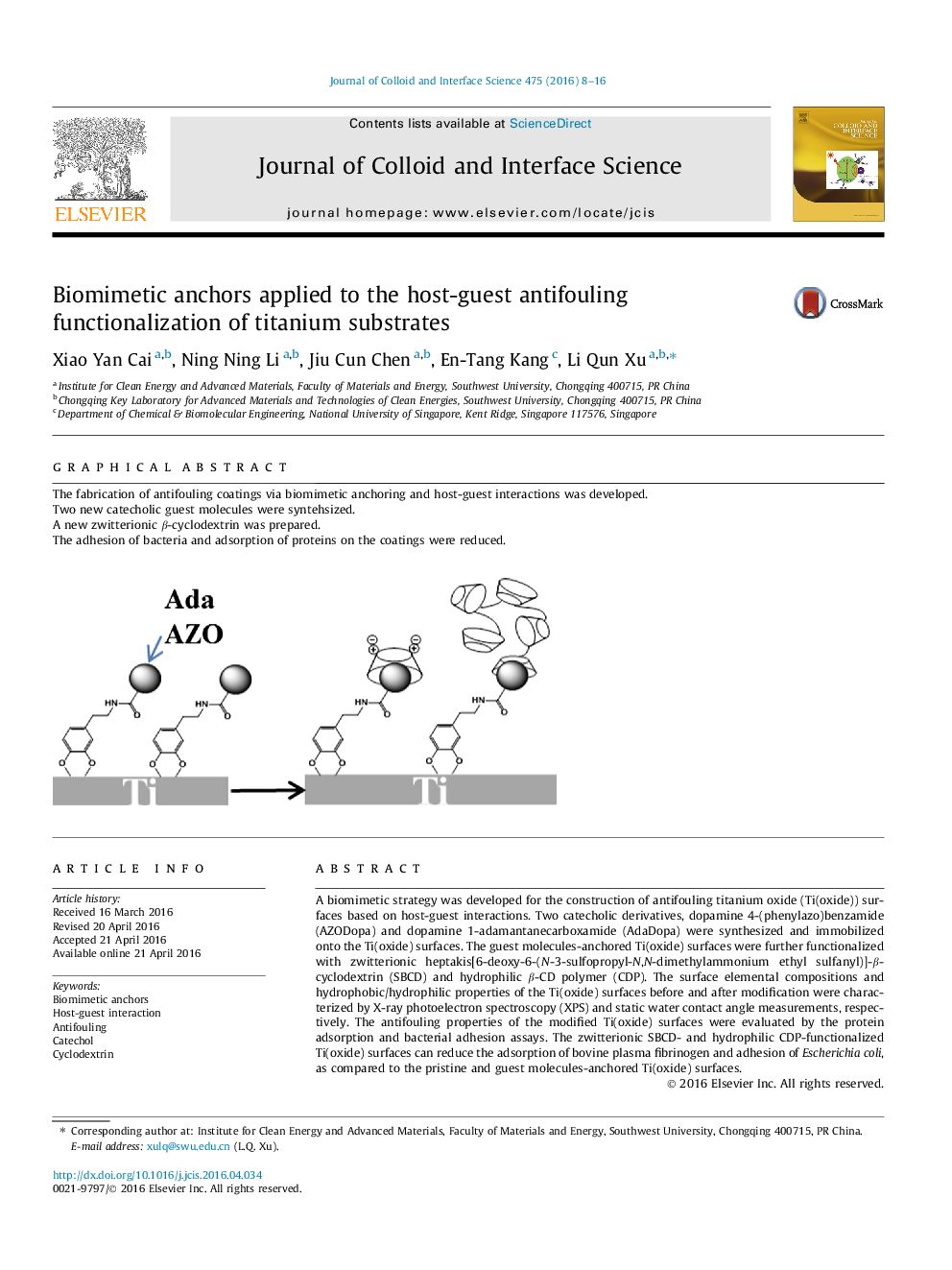| Article ID | Journal | Published Year | Pages | File Type |
|---|---|---|---|---|
| 606197 | Journal of Colloid and Interface Science | 2016 | 9 Pages |
A biomimetic strategy was developed for the construction of antifouling titanium oxide (Ti(oxide)) surfaces based on host-guest interactions. Two catecholic derivatives, dopamine 4-(phenylazo)benzamide (AZODopa) and dopamine 1-adamantanecarboxamide (AdaDopa) were synthesized and immobilized onto the Ti(oxide) surfaces. The guest molecules-anchored Ti(oxide) surfaces were further functionalized with zwitterionic heptakis[6-deoxy-6-(N-3-sulfopropyl-N,N-dimethylammonium ethyl sulfanyl)]-β-cyclodextrin (SBCD) and hydrophilic β-CD polymer (CDP). The surface elemental compositions and hydrophobic/hydrophilic properties of the Ti(oxide) surfaces before and after modification were characterized by X-ray photoelectron spectroscopy (XPS) and static water contact angle measurements, respectively. The antifouling properties of the modified Ti(oxide) surfaces were evaluated by the protein adsorption and bacterial adhesion assays. The zwitterionic SBCD- and hydrophilic CDP-functionalized Ti(oxide) surfaces can reduce the adsorption of bovine plasma fibrinogen and adhesion of Escherichia coli, as compared to the pristine and guest molecules-anchored Ti(oxide) surfaces.
Graphical abstractThe fabrication of antifouling coatings via biomimetic anchoring and host-guest interactions was developed.Two new catecholic guest molecules were syntehsized.A new zwitterionic β-cyclodextrin was prepared.The adhesion of bacteria and adsorption of proteins on the coatings were reduced.Figure optionsDownload full-size imageDownload high-quality image (87 K)Download as PowerPoint slide
